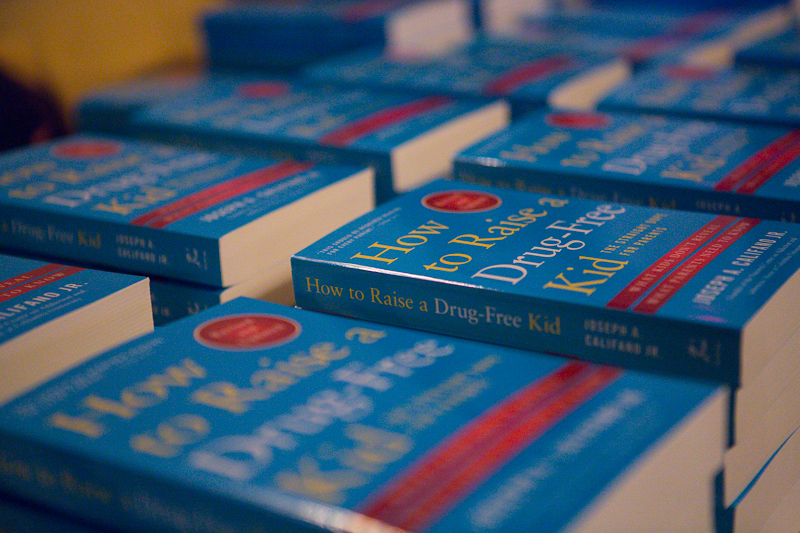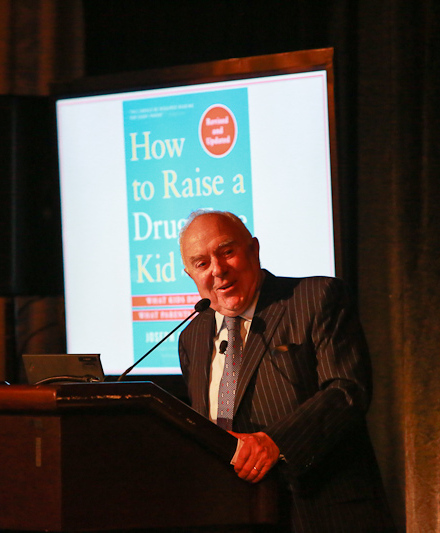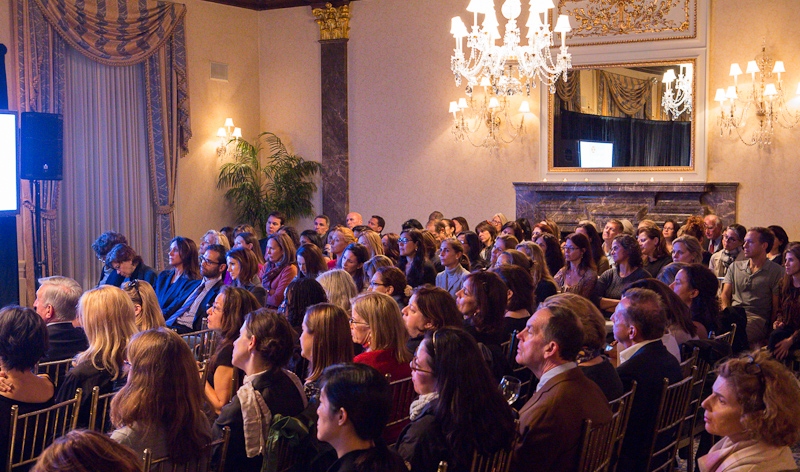
- This event has passed.
How to Raise a Drug Free Kid: The Straight Dope for Parents
November 12, 2014 @ 5:45 pm - 8:00 pm

Substance Abuse: Be A Parent, Not A Pal by Lisa Huffines
Parents have a lot more power than they may realize to prevent teens from sliding into substance abuse. That was the strong message a sell-out crowd at the Harmonie Club heard on the evening of November 12, when Joseph A. Califano, Jr., headlined a panel discussion on “How to Raise a Drug Free Kid: The Straight Dope for Parents,” which is also the title of Califano’s recently updated book.
Califano, who served as United States Secretary of Health, Education, and Welfare during the Carter administration, is a founder of the National Center on Addiction and Substance Abuse at Columbia University (CASA), which co-sponsored the event with Parents in Action. Serving on the panel with Califano were Drs. Joe Woolston and Claudia Califano, both of the Yale Child Study Center, and Dr. Herbert Kleber, director of the Division of Substance Abuse at the New York State Psychiatric Institute. Dr. Sam Ball, the newly elected president of CASA and a professor of psychiatry at Yale, moderated the discussion.
Califano’s chief message, both in his opening remarks and in his book, is that parents often fail to exercise the power they have over their children’s use of illegal substances. They forget, Califano said, that their job is to “be a parent, not a pal.” This is particularly critical with regard to substance abuse, he said, because anyone who reaches the age of 21 without abusing drugs or alcohol is virtually “home free” for life.
Prevention, according to Califano, is fairly simple. Parents must be involved in their children’s lives, and they must set rules and stick to them. Easier said than done, of course, in a world where teens are faced with constant difficult decisions, but the panel recommended a zero-tolerance policy.
Zero tolerance raised questions in the audience; one could almost feel the murmur of objection from listeners, which could have been articulated as, “But shouldn’t we be more … realistic?” The panelists clarified: Zero tolerance means saying “I don’t want this in your body” and imposing consequences when the rule is broken. But, the panelists said, by all means be realistic in imposing the consequences, which should be commensurate with the offense – one panelist suggested a reversal of the privilege of freedom that has been abused – but not draconian. The point is to make clear a categorical disapproval of the child’s use of illegal substances, and to follow through with discipline when these expectations are not met. The excuse that “everybody does it” is not true; there are kids who abstain. Califano points out, for example, that three quarters of teens do not smoke pot.

For those parents still unsure that zero tolerance is a workable policy, Califano offered substantial fuel for firmer resolve, in the form of frightening new science on the substances our children are encountering and the harms these substances can cause. Here are a few salient facts:
- Alcohol contributes to the deaths of nearly 2,000 college students each year.
- Whether you allow your teen a glass of wine with dinner or not will have no impact on whether she chooses to binge drink with friends. Binge drinking is actually even more prevalent in most European countries, where legal restrictions and cultural barriers to teen drinking are looser, than it is in the US.
- Marijuana is much stronger than it used to be. Average potency has gone up twelvefold since 1975, and more than doubled since 2000. And that’s just the average. Marijuana marketed in Colorado under names like “green crack” can be exponentially stronger, and edibles may contain up to 50 percent THC.
- Edible marijuana is dangerous for another important reason: it can take up to two hours to take effect. When they don’t feel immediate effects, users decide to take more – easy, when it looks and tastes like candy — and overdose.
- Synthetic marijuana, sold legally in many states in gas stations and convenience stores, can be fatal.
- Even cigarettes are more addictive than they used to be, according to the Surgeon General.
- Contrary to popular belief, marijuana is addictive. Studies have estimated that nine percent of people who use it become dependent, and that number grows to 25 to 50 percent for daily users. Teens are more vulnerable to drug dependency than adults. For teens that enter drug treatment, marijuana is the primary substance of abuse for the overwhelming majority – over 70 percent.
- Because today’s pot is so strong, even the weekend user can suffer consequences such as impaired memory during the week.
- The permanent effects of early drug and alcohol abuse are real. Adults who drank heavily during their teenage years show smaller hippocampi than those who did not. Regular marijuana use lowers adult IQ – even among adults who stopped using at age eighteen — and can trigger serious mental illnesses like schizophrenia in those who are predisposed. Its associations with depression and anxiety are strong as well.
There is a great deal parents can do, beyond setting and enforcing firm rules about substance abuse, to keep their children safe:
- Immediately, discard all unused prescription drugs. Experimentation with opiates has become an upper-middle-class phenomenon, and users often get these substances at home, either their own home or a friend’s.
- Open lines of communication early. Even very young children can benefit from a discussion of family history of substance abuse. Older kids should understand that the more they enjoy their first experiments with drugs or alcohol, the more susceptible they may be to addiction. That first experience is an important harbinger.
- Watch social media. Children, even very young children, are bombarded with glorified images of teens abusing drugs and alcohol. With a few keystrokes anyone can learn how to roll the perfect joint, or what Ecstasy feels like. These are “dangerous neighborhoods,” Califano said, and they require monitoring and discussion.
- If you discover your child is drinking or using drugs, don’t dismiss it as age-appropriate experimentation. Each of the panelists commented that they see too many parents in their practices that avoid dealing with a substance abuse issue because they think it will go away on its own. Kleber said the problem is particularly acute among affluent parents. Also, be aware that the younger siblings of kids who experiment with drugs and alcohol are much more likely to try these substances themselves.
- If treatment is needed, family participation is critical. Twelve-step programs and residential treatment facilities have poor success rates for teens. All agreed that it’s essential to get families intensively involved in treatment, and that sending the child away for treatment generally doesn’t serve this need.

